Take it from Mrs Everybody, making jam is so easy and so satisfying. Homemade jam is truly delicious and once you understand the basic principles, you can adjust recipes to make jam exactly how you like it.
A photograph showing Mrs Everybody's jam display - It is not her jam eating schedule! 12 o'clock, Apple and Blackberry Jam 2 o'clock, Yellow Bullace Jam 6 o'clock, Elderberry Jam 9 o'clock My Masterly Rosehip JellyNovice Jam Makers Instructions
With the instructions on the back of the 'jam sugar' packet, Mrs Everybody made a delicious batch of elderberry jam in minutes and almost an instantly caught the jam making bug. It is a most pleasant infection! Mrs Everybody hopes you catch it too. You will need: A big steel saucepan A sugar thermometer - it must measure up the magic number of 222 degrees Fahrenheit, or 105 degrees Celsius. 1kg freshly gathered soft fruit, after it has been carefully sorted and prepared. Soft fruits are low in pectin, hence the use of 'jam sugar' 1kg of 'jam sugar'. This sugar mixed in with pectin already. 1 lemon, orange or lime Follow the instructions on the back of the sugar packet! Melt the jam sugar slowly over a low heat, before you bring the mixture up to temperature. The jam can be ready with in a minute or two after the correct temperature is reached. Have your hot sterilized jars to the ready.Prepared, Wash and Sterilize the Jars
Are you reusing jars? Good. But please do remove old labels first! Soak the jars in hot water until the labels are thorough wet. Some labels will just fall of, but some have huge sticking power. With these ones, rub some hemp oil soap over the wet label. Leave the soap to work for a few minutes, then rub of with a scourer. Goodbye, sticky label. Then wash it up with soapnut liquid and rinse in fresh water.Washing Up Jars with Soapnut Liquid
Make your soapnut washing up liquid, by standing a handful of soapnuts in a bowl of warm water for an hour or two. Hey presto, you have made washing up liquid and you can use it without rubber gloves. Hurray! Add some soapnut liquid into a bowl of hot water and wash the jars and the lids. Rinse and allow to drain, or dry. They will be residue free and sparkling like new jars.Sterilize your Jam Jars
Place the jars on a steel baking sheet and sterilize then in the oven at 100 degrees Celsius for 10 minutes. It is best to do this ten minutes before the jam is ready - that way the jam and the jars will be about the same temperature and this should avoid cracking the jars. To sterilize the lids (which often contain a plastic seal), pour scalding water over them and allow to air dry, or dry thoroughly with a super clean cloth.How to Test the Jam for the Setting Point
While it might seem a bit odd, to place two saucers in the freezer for 10 minutes, but the cold plate setting test, can give you the 'Set' or 'Not Set' result in one minute. Only minutes are between a gently set jam and an overcooked rubberized jam, so it is an appropriate test for jam makers. Get the plates cold. Once the jam reached 105 degree Celsius, give the jam a another minute cooking time, and place one teaspoon of your remarkable jam on one of your cold plates. To prevent a lifetime of regret, turn the heat off. Leave the jam on the plate for 1 minute, then gently run your finger over the surface of the jam. Does the skin wrinkle slightly? - If so, it is set. If not, heat the jam up again to the magic temperature, cook for another minute or two and test on your second plate. It should hopefully set now.Further Developments
Since Mrs Everybody's first jam making experience, she has purchased a bottle of liquid pectin (made from apples) and another bag of jam sugar and made lots of jam. You can skip pectin altogether if you use apples, or high other pectin fruits as part of your fruit ingredients. Now Mrs Everybody has four different jams on her shelf and these should tide her over to the Seville oranges reappear, where she will no doubt be raving about homemade Seville orange marmalade. You can reduce the level of sugar / increase the quantity of fruit, or if you prefer a low sugar jam, then look up recipes for fruit compot - these lower sugar 'jams' need to be kept in the refrigerator as they are not 'preserved.'Notes
Elderberry Jam with Jam Sugar
I used about 1kg of elderberries, some freshly squeezed lemon and 800g of pectin sugar.Apple and Blackberry Jam
I didn't need any pectin, so I just used some lemon juice, normal sugar, again a slightly reduced quantity.Yellow Bullace Jam, with Lime and Infused with Fresh Rosemary
I popped the stones out of the bullaces the night before I made the jam, and soaked the squashed bullaces in normal sugar over night with a vanilla pod. The idea was to soften the skin further, so that I didn't need to strain them out of the finished jam. I made the jam and at the end added a tiny squeeze of lime juice and then pushed a fresh rosemary spring into each jar. Hmmm tangy and aromatic! Again, I reduced the sugar, so it was more like 8 parts of sugar to 10 parts of fruit by weight.Rosehip Jelly, Gently Spiced with Hibiscus Flower, Cinnamon and Clove
This was Mrs Everbody's coup-de-grace and her added extras took this potentially bland jelly to a new dimension. 1 kilo prepared rosehips 800g sugar Probably about 4 liters of water (it does boil down). A few strips of dried hibiscus flowers, a hibiscus tea bag would do, but not loose hibiscus tea, because you will be extracting the hibiscus, before placing it in jars. A small cinnamon stick. A dried clove. Again these extras will be extracted at the end. You will need a square yard of muslin cloth as your 'jelly straining bag.' If it is a new piece of cloth wash it first in your soapnut solution, rinse it and sterilized it with boiling water. For the best results, cut the dead flowers off the end of the rose hips and any remaining stalks. It is quite a hard task. I guess some people skip this part. Chop the rosehips and place then in a saucepan, put over double the quantity of water. You could potentially use a liquidizer to do the chopping for you. Simmer until the rosehips are soft and once contents of the saucepan are cool enough to handle, place the contents in muslin cloth laid over a large bowl and tie it closed. Hoist the muslin bag over your large bowl and let the juices drain out over night. Don't squeeze the bag. The next morning you will have some rosehip juice. Set the liquid aside and refrigerate it or keep covered in a cool place. Return the contents of the jelly bag into your saucepan and add more water. Repeat the cooking to extract more goodness. Some people do it three times. Put the contents into the jelly bag a second time and collect more of the liquid over night. Combine the collected rosehip liquid. At that point the liquid took up about the same space in my saucepan as the rosehips had at the very beginning of the process, in fact there was a bit more liquid. Weigh the liquid and add the appropriate amount of sugar. Again, I used my 8:10 ratio of sugar to fruit. Heat the jelly gently until all of the sugar is dissolved. During the cooking process I also added some hibiscus flowers, a clove and a small piece of cinnamon, to give the jelly more depth. I removed the extras at the end. Then add about half a bottle of liquid pectin to the mixture as the temperature rises. Test with the usual jam setting test. Even if it refuses to set, you will have a delicious rosehip syrup and queues of people outside your front door. Place the sweet liquid in a sterilized bottle and refrigerate it. Rosehips contain 20-40 times the amount of vitamin C as oranges and you will surely hanker after it in the dark days of winter.Mrs Everybody had her special Rosehip Jelly with bread and cheese this lunch time - It was very delicate and wonderfully interesting.


